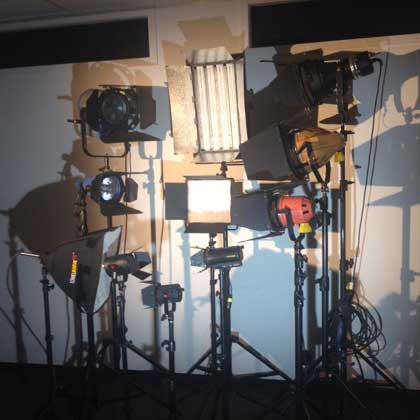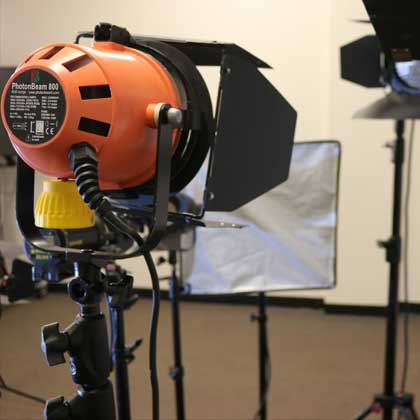'What you are doing is taking every image from your film and you are painting it with lights. That’s the art form.'
AFTT’s Head of Technology tutor brings you the top film lighting tips and tricks to bring your film to life. Generally, film lighting is done in 2 different colour temperatures; Tungsten and Daylight.

Tungsten
Tungsten refers to the filament that is heated up to create the light – it is the piece of wire that appears in the light bulb above your head when you have an idea!
Daylight
Daylight is obviously the same or relative temperature of sunlight or moonlight. As moonlight is merely a reflection of the sun, it has the same colour temperature as sunlight.
Kelvin
Tungsten has a 3,200 measurement of Kelvin which is a yellow-ish light. The temperature of daylight ( or moonlight) is 5,600 Kelvin, a blue-ish light. Daylight measurements of Kelvin however, are not completely accurate when you are outside. During sunrise and sunset, the sun is very orange and will emit a light that is probably only 2,500 Kelvin or less, but in the middle of the day it could emit between 5,600 and 6,500 Kelvin or more.
White T-Shirts
In the film industry we work with distinct measurements so that our cameras can reproduce colours whether we be outside or inside depending on which lighting we are under, tungsten or daylight. This way, the colour representations and white representations will remain the same if you have a subject wearing a, lets say white T-shirt, and they are outside into the sunlight then come indoors to be filmed under tungsten lights you can do two white balances in camera that you go between for the indoor and outdoor locations so the t shirt doesn’t look different colours under different lighting. The white balance reorients the colours that the camera will see and the values they have so people wearing white T-shirts will not change colour as you move around different lighting situations.

Continuity
Always have a continuity of light temperature in your shots. Colour correction gels can change the temperature of tungsten lights to daylight balanced lights and vice versa.
Hard and Soft Lights
Generally hard lights create shadows which enhances drama and dramatic effect. Generally soft lights soften shadows, creating a more realistic effect.
The Nitty Gritty
Lights are hot, especially tungsten lights so always use gloves when touching lighting, and do not move them when they are hot or the bulbs will blow!
Always gaffa-tape your cables down to the floor otherwise people will trip over them, the lights fill fall down and people will burn. Fact.
No matter how many times you wash your hands a day, there will always be grease on a humans hand. Therefore, when you change bulbs on the lights, you must wear gloves, otherwise this grease will go onto the bulbs, it will raise the temperature of the bulb when it is being used and the bulb will burst.
To find out more about our Film courses, click here.